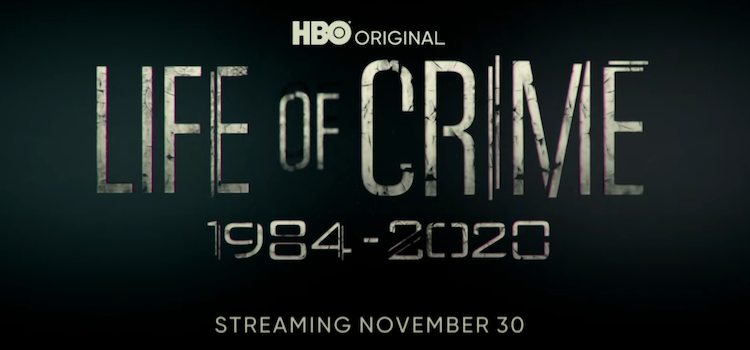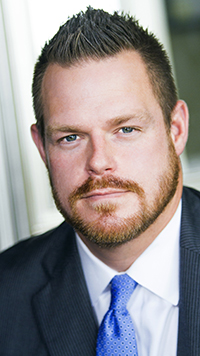
HBO’s ‘Life of Crime’ and a career defending the same
April 7, 2022, 8:42 am CDT
- !function(d,s,id){var js,fjs=d.getElementsByTagName(s)[0],p=/^http:/.test(d.location)?'http':'https';if(!d.getElementById(id)){js=d.createElement(s);js.id=id;js.src=p+'://platform.twitter.com/widgets.js';fjs.parentNode.insertBefore(js,fjs);}}(document, 'script', 'twitter-wjs'); Tweet
- lang: en_US
-


Screenshot via YouTube.
Crime is consistent. After all, if we look back to the world’s oldest “criminal codes” (the Code of Ur-Nammu—circa 2100 to 2050 B.C.; the Laws of Eshnunna—circa at least 1930 B.C.; the Code of Lipit-Ishtar—circa 1934 to 1924 B.C.; and the Code of Hammurabi—circa 1755 to 1750 B.C.), we see actions such as false charges and testimony, theft, distraint, trespassing, kidnapping, sexual offenses, bodily harm and murder outlawed, with punishment ranging anywhere from a fine, maiming or death. Although there have seemingly always been penalties, crime continues.
Some may dream of a utopian society in which there is no pain, suffering, hatred, or crime. But since society remains subject to the despair and derangement accompanying vices such as greed and wrath, we will continue to stray from such an ideal. Moreover, as long as humans suffer from addiction and untreated mental health issues, we will continue to see criminal behavior that spans generations. One such example out of the millions is outlined in HBO’s Life of Crime: 1984-2020.
A ‘Life of Crime’Directed by Jon Alpert, Life of Crime: 1984-2020 is the third installment in a series following criminals in the Newark, New Jersey area. Beginning initially with One Year in a Life of Crime (1989) and Life of Crime 2 (1998), the final chapter has stand-alone value. I approached the documentary without any knowledge of the first two installments with no issue.
The program starts in an almost whimsical fashion: First-time viewers are introduced to Robert Steffey and Freddie Rodriguez, two low-level thieves in New Jersey. They make their living knocking off small-time storefronts with quick grab-and-go exploits. Their disenchantment with the idea of a typical 9-to-5 is clear, and they’re incredibly proud of the amount of money they make reselling the stolen property. As the audience meets the other players in Steffey and Rodriguez’s circumstances—specifically Deliris Vasquez—it’s easy to see these “criminals” as nothing more than deviants who aren’t out to do physical harm to anyone else, but they end up hurting themselves.
That tenor changes when another character named Mike McGrath is introduced. The initially folly abruptly turns to one of the most challenging scenes of domestic violence I’ve witnessed. The way McGrath physically, mentally and verbally abuses the mother of his unborn child is infuriating to the point I almost stopped the film. The scene is visceral and intensely unhinged. McGrath is ultimately imprisoned, but his introduction and quickly dissipating story arch form a segue into the drug-addled reality of desperation and destruction soon to follow.
The remainder of the film takes an extremely depressing look at the tumultuous turns of drug addiction. The main characters battle with their demons as they enter and leave prison. The audience experiences their ups and downs as they continuously get clean just to backslide again. Nevertheless, it’s easy to see these are not “bad” people; they have bad genetics and bad circumstances that lead to bad choices with bad repercussions.
The documentary is surreal. As we’ve become accustomed to “docuseries” and “found footage” vantage points, we forget those forms of moviemaking are relatively recent developments. Consequently, there were times I caught myself viewing the documentary as a fictional account because so much of the footage is almost unbelievable. But that may be the most vital aspect of Life of Crime: 1984-2020; to be an active viewer, you must constantly remind yourself that these are real people, and these struggles really occurred (and still do). The protagonists are repeatedly met with disdain and hurdles based on their status as “criminals.” Even when they try to “do good,” they still can’t escape the stigma.
A life of (defending) crimeRecently, another defense attorney pointed out caselaw from the Oklahoma Court of Criminal Appeals where two lawyers submitted affidavits in support of a new trial based on their self-proclaimed ineffective assistance of counsel. In the unpublished opinion authored by a former district attorney and first assistant attorney general, the appellate court cited the district judge’s ruling that:
Both defense counsel submitted affidavits declaring that they had in fact presented ineffective assistance. The notion of defense counsel “falling on their own swords” in order to cause a new trial is [so] repugnant to this court that it will not be considered.
Now, these affidavits are sworn statements subject to penalty of perjury. The practitioners had the fortitude and selflessness to risk their careers and criminal records to do right by their client, yet they were still cut off at the legs by a district judge so caught up in maintaining a guilty verdict that he refused to even consider the statements of licensed professional officers of the court.
In speaking with counsel who have spent their entire careers defending the criminally accused, the job has become more and more thankless as the decades have gone by. Deep lines have been drawn to divide the state and those who defend defendants. Where litigants were once able to battle in court and get a beer afterward, there is now distrust and disrespect between both sides. That feeling carries over to the bench in my home state, where most judges are former prosecutors.
These sentiments seem engendered by an increasingly divided “justice” system: Instead of a venue for the truth, courtrooms have become a “win-at-all-costs” environment. The parties feel a need to be guarded and cynical of the opposition’s position, and that skepticism is exponentially directed most often at those associated with the “bad guys.”
Like the individuals we represent, it’s hard to escape the stigma.
Champions of the downtroddenAs Life of Crime: 1984-2020 clarifies, “criminals” are not necessarily “bad” by nature. Often, they are victims, too: Victims of their circumstances, infirmities and addictions. Consequently, neither isolated incidents of criminal behavior nor an entire “life of crime” can be merely chalked up to bad people or bad decision-making skills. There are too many other variables to consider.
Nevertheless, the general public doesn’t always appreciate that, and its opinion of criminals and the ones who defend them is often negative. I’m in my second decade defending defendants, and I can’t count the number of times friends, family and even strangers have questioned how I’m able (or why I choose) to associate with criminal clients. Honestly, I don’t give two licks what they think. I know they’re coming from a place of ignorance. After all, to quote the great Clarence Darrow: “To be an effective criminal defense attorney, an attorney must be prepared to be demanding, outrageous, irreverent, blasphemous, a rogue, a renegade and a hated, isolated, and lonely person—for the few love a spokesperson for the despised and the damned.”
I don’t do this job to make friends. I do it because I love our freedom, and I love the document that allows us to fight for the same. Sure, that can cast me as a “rogue” or a “renegade,” but it’s something I’m proud of. While you can say I make my living fighting the people who fight crime, I also fight those who try to trample on our most sacred rights.
In the words of Cynthia Roseberry: “We, as criminal defense lawyers, are forced to deal with some of the lowest people on earth, people who have no sense of right and wrong, people who will lie in court to get what they want, people who do not care who gets hurt in the process. It is our job—our sworn duty—as criminal defense lawyers, to protect our clients from those people.”
Often, that means stepping up for, and standing besides, those who have lived a “life of crime”—and as Life of Crime: 1984-2020 so poignantly paints, those people aren’t necessarily “bad.” Usually, they are merely victims as well; victims of bad upbringings, which lead to bad circumstances, which lead to bad choices, which ultimately lead to bad consequences.

Adam Banner
Adam R. Banner is the founder and lead attorney of the Oklahoma Legal Group, a criminal defense law firm in Oklahoma City. His practice focuses solely on state and federal criminal defense. He represents the accused against allegations of sex crimes, violent crimes, drug crimes and white-collar crimes.
The study of law isn’t for everyone, yet its practice and procedure seems to permeate pop culture at an increasing rate. This column is about the intersection of law and pop culture in an attempt to separate the real from the ridiculous.
This column reflects the opinions of the author and not necessarily the views of the ABA Journal—or the American Bar Association.
$( document ).ready(function() { var slidesFetched = false; var handleGalleryClick = function() { var $oldItem = $('.gallery_container'); $('.gallery_container .arrows a').click(function(e) { e.preventDefault(); $arrow = $(this); if (! slidesFetched) { $arrow.closest('.gallery_slide').css('opacity', '0.3'); var url = $(this).attr('href').replace('/gallery/', '/gallery/slides/'); $.get(url, function(data) { var $slides = $(data); $slides = $slides.filter('.gallery_container'); $('.gallery_container').replaceWith($slides); $slides = $('.gallery_container'); $slides.find('.arrows a').click(function(e2) { e2.preventDefault(); var $slideWrapper = $(this).closest('.gallery_container'); var $arrowContainer = $(this).closest('.arrows'); if ($arrowContainer.hasClass('previous')) { $slideWrapper.removeClass('active'); $slideWrapper.prev().addClass('active'); } else if ($arrowContainer.hasClass('next')) { $slideWrapper.removeClass('active'); $slideWrapper.next().addClass('active'); } changeSlide($('.cell-'+$(this).attr('data-slideid'))); }); changeSlide($('.cell-'+$arrow.attr('data-slideid'))); slidesFetched = true; }); } changeSlide($('.cell-'+$(this).attr('data-slideid'))); return false; }); var changeSlide = function($cell) { $('.slide-'+$cell.attr('data-slideid')).addClass('active').siblings().removeClass('active'); $cell.addClass('active').siblings().removeClass('active'); moveFilmstripCells($cell); // Hide filmstrip arrows if we're on the first/last slide. if ($('.gallery_container.active').find('.arrows.previous').length > 0) { $('#filmstrip_container .arrows.previous').css('visibility', 'visible'); } else { $('#filmstrip_container .arrows.previous').css('visibility', 'hidden'); } if ($('.gallery_container.active').find('.arrows.next').length > 0) { $('#filmstrip_container .arrows.next').css('visibility', 'visible'); } else { $('#filmstrip_container .arrows.next').css('visibility', 'hidden'); } }; var $cells = $('#filmstrip_container .cell'); var totalCells = $cells.length; var totalVisibleCells = $cells.filter('.visible').length; var pivotPoint = Math.floor(totalVisibleCells / 2); var moveFilmstripCells = function($activeCell) { var $visibleCells = $cells.filter('.visible'); var activeCellIndex = $cells.index($activeCell); var activeCellVisibleIndex = $visibleCells.index($activeCell); var firstVisibleCellIndex = $cells.index($cells.filter('.visible:first')); var lastVisibleCellIndex = $cells.index($cells.filter('.visible:last')); var cellsToMove = 0; var startingPoint = 0; // Do nothing if active cell is at the pivot point. if (activeCellVisibleIndex == pivotPoint) return; // Active cell is left of the pivot point. if (activeCellVisibleIndex < pivotPoint) { // Do nothing if the cell's index and visible index are identical, because that means // we don't have room to shift. if (activeCellIndexIntroducing Jobbguru: Your Gateway to Career Success
The ultimate job platform is designed to connect job seekers with their dream career opportunities. Whether you're a recent graduate, a seasoned professional, or someone seeking a career change, Jobbguru provides you with the tools and resources to navigate the job market with ease.
Take the next step in your career with Jobbguru:
Don't let the perfect job opportunity pass you by. Join Jobbguru today and unlock a world of career possibilities. Start your journey towards professional success and discover your dream job with Jobbguru.
Originally posted on: https://www.abajournal.com/columns/article/life-of-crime-and-a-career-defending-the-same/?utm_source=feeds&utm_medium=rss&utm_campaign=site_rss_feeds